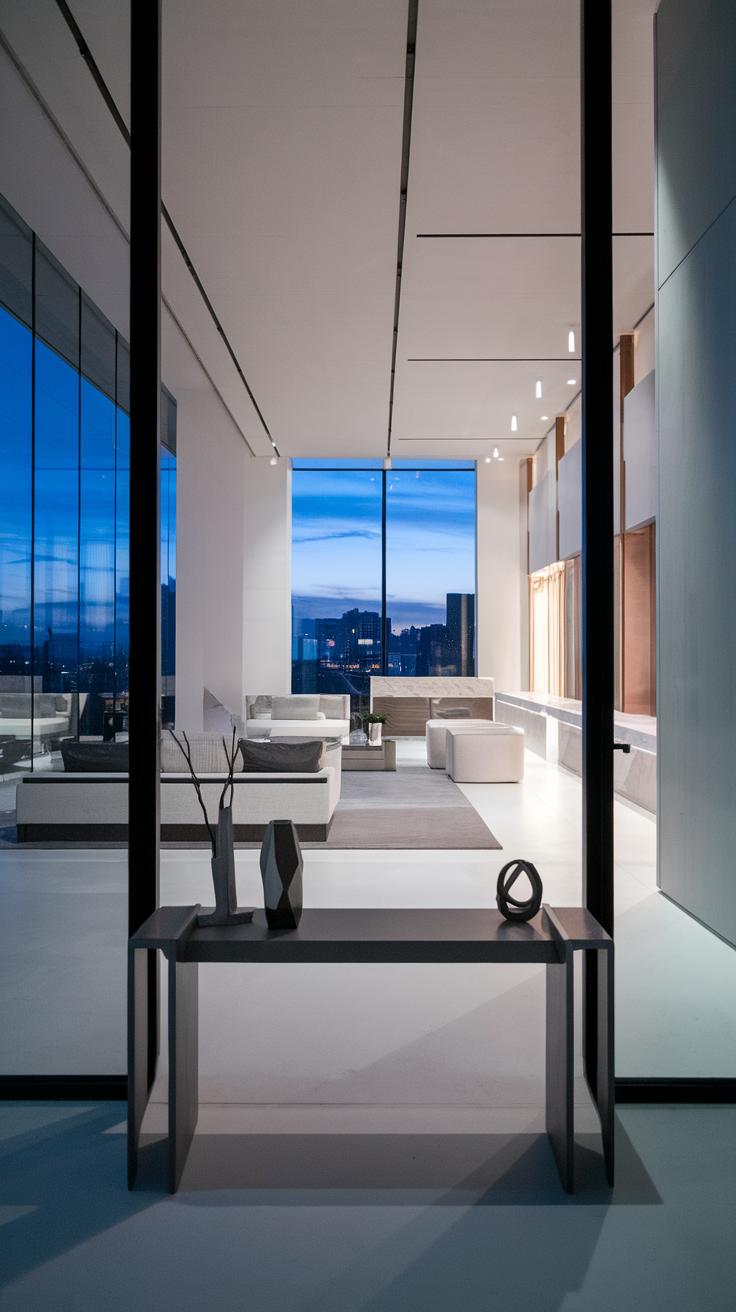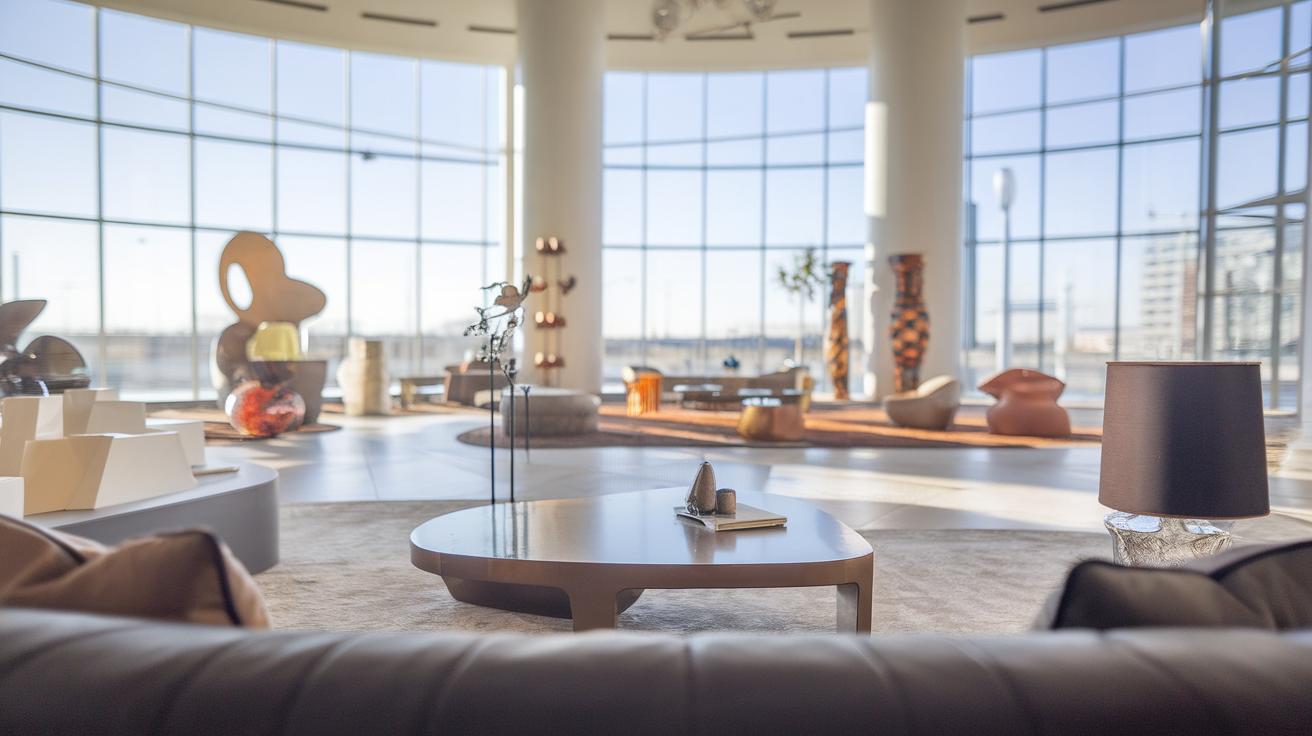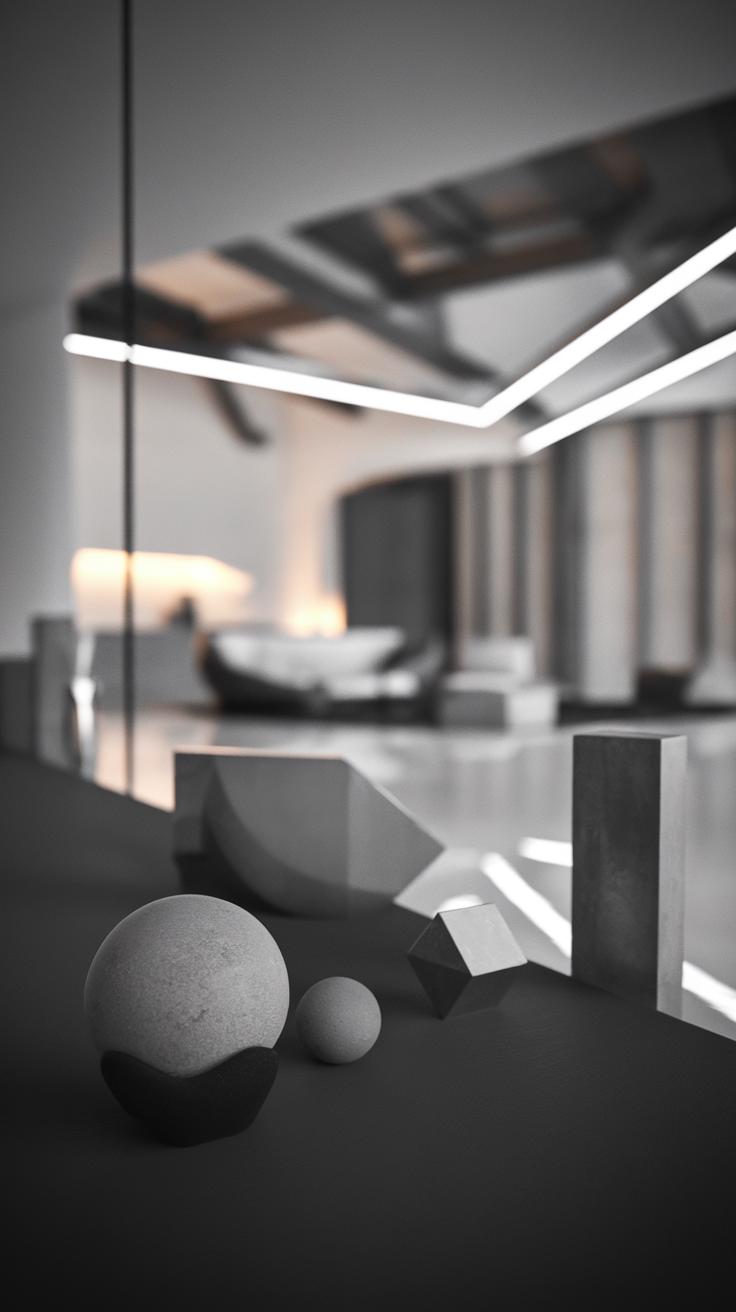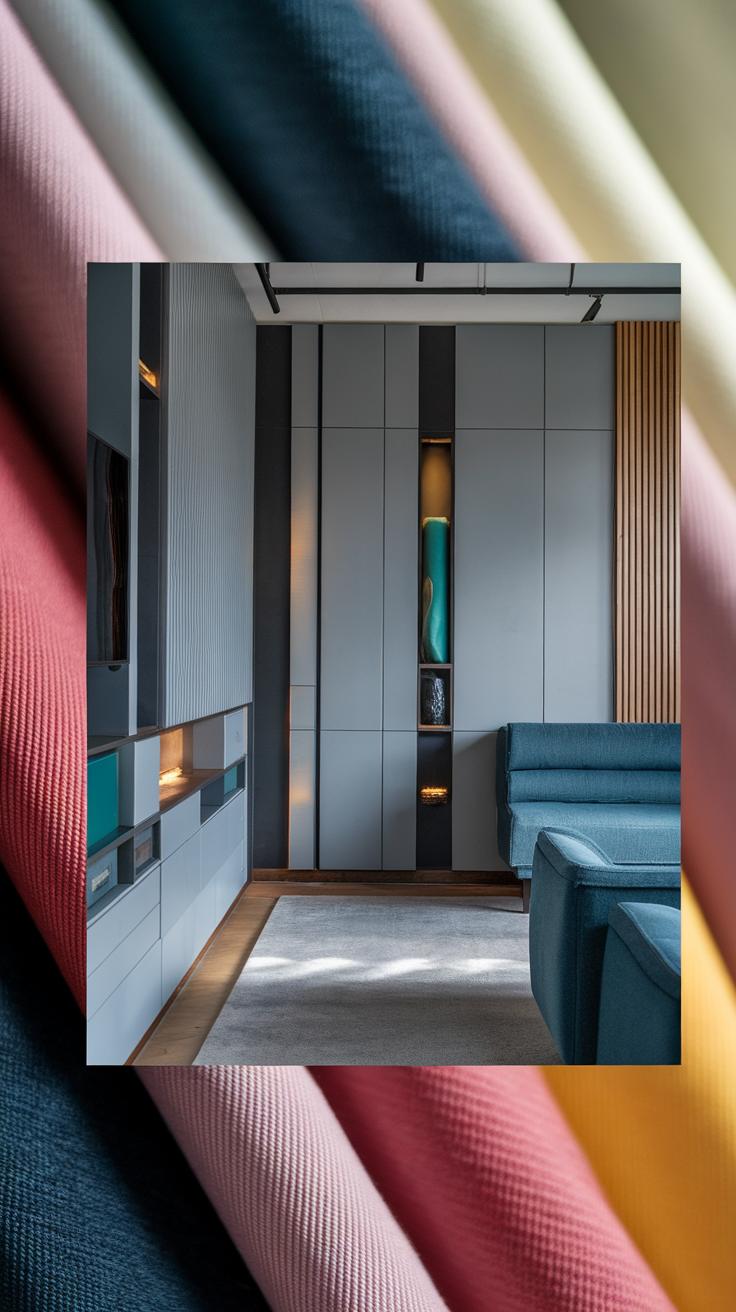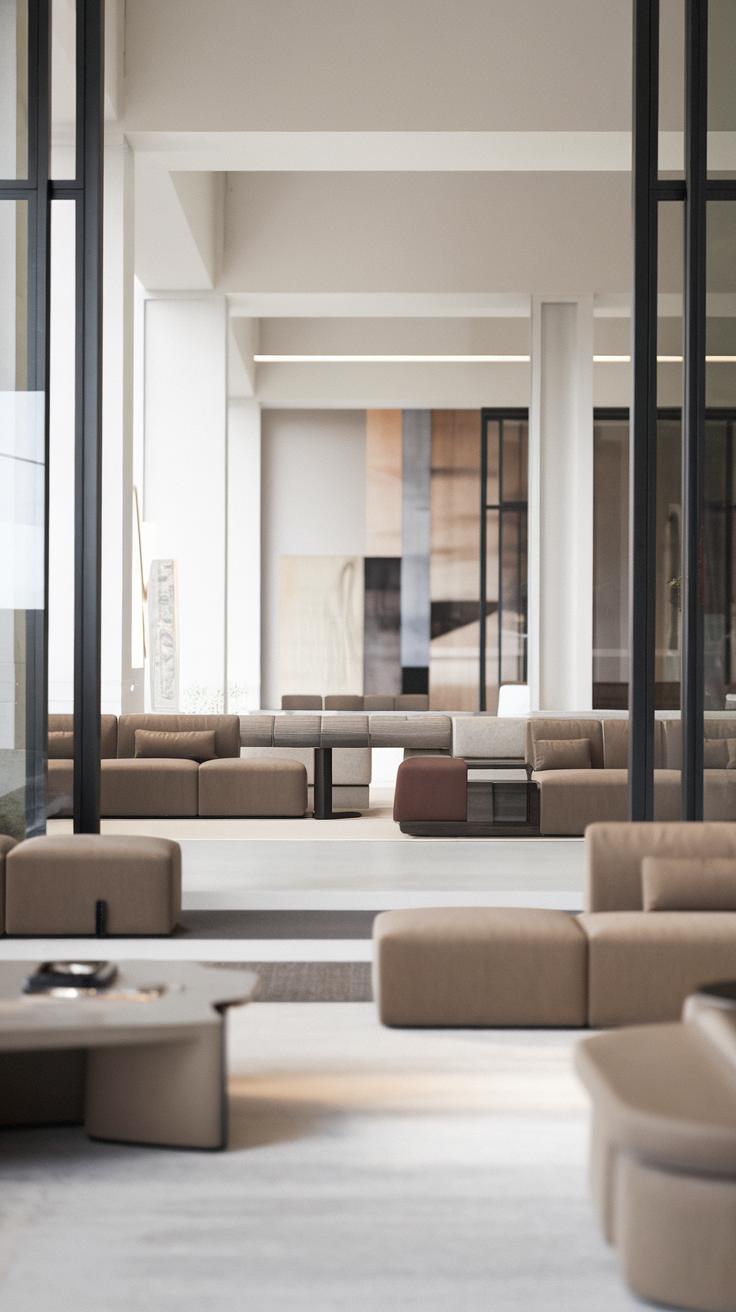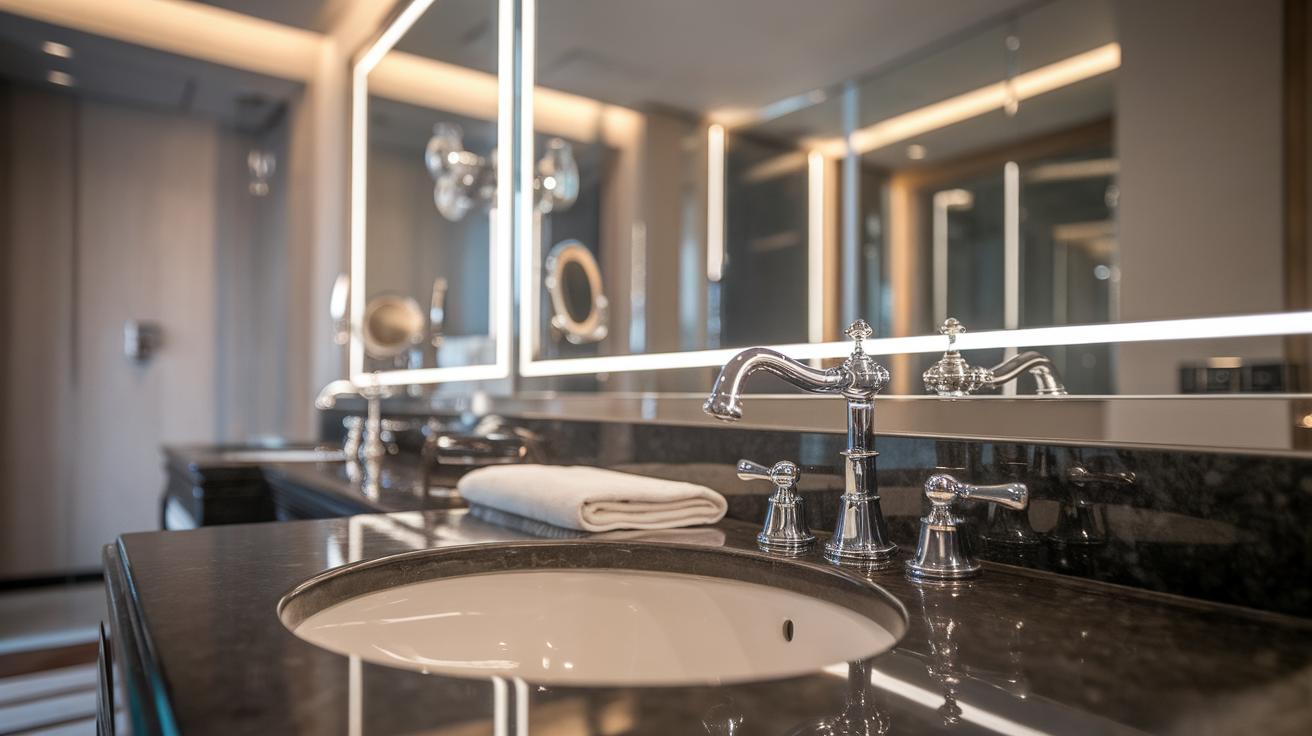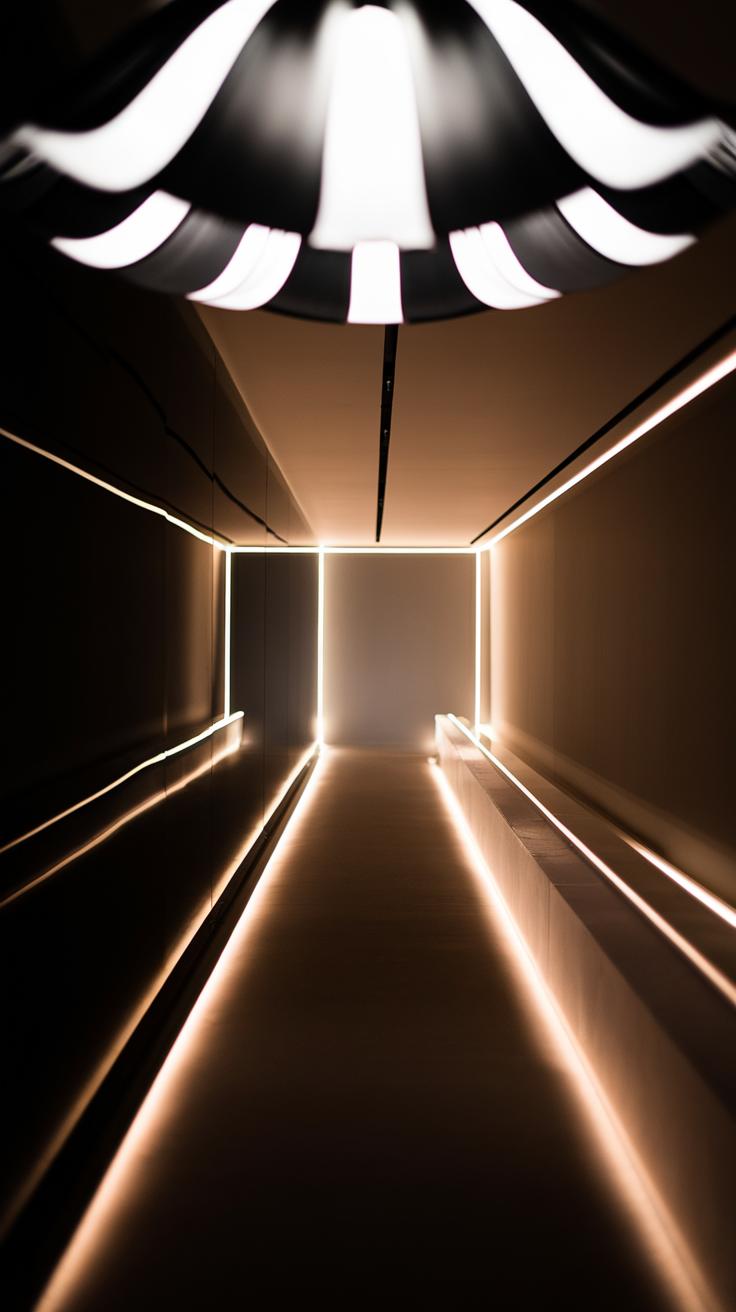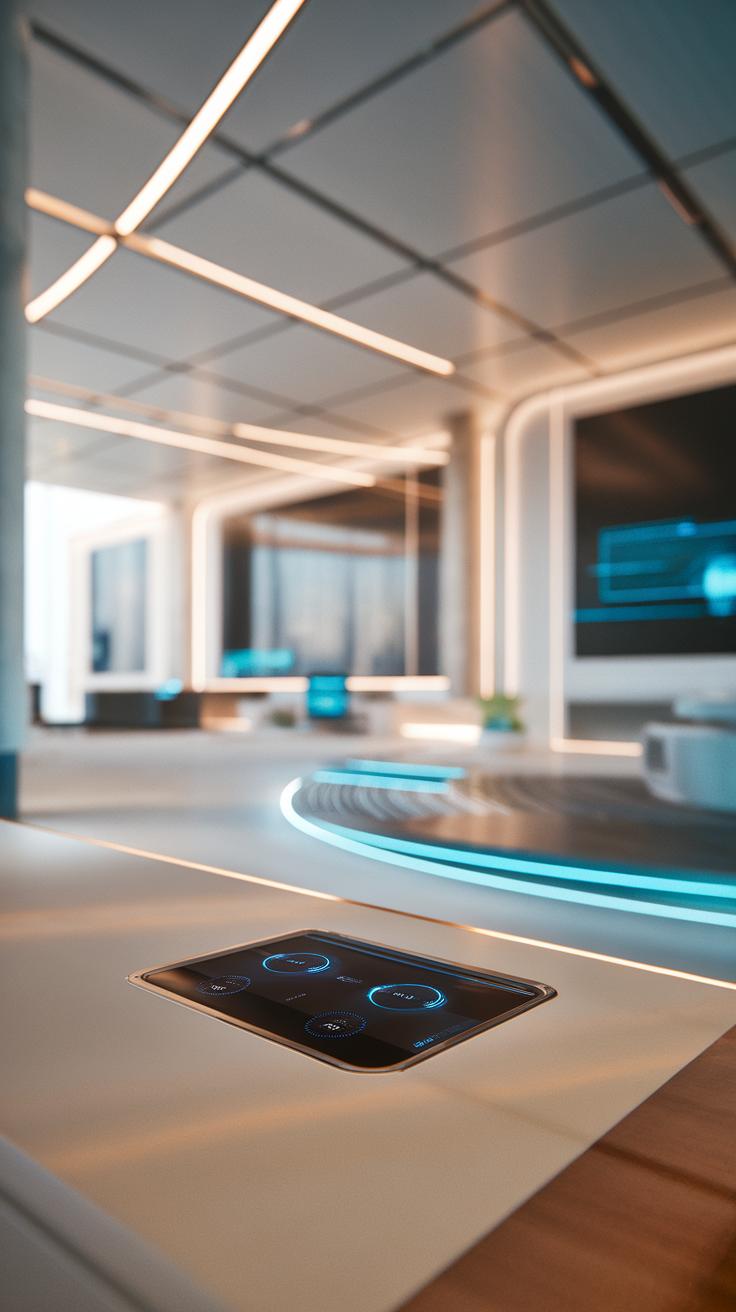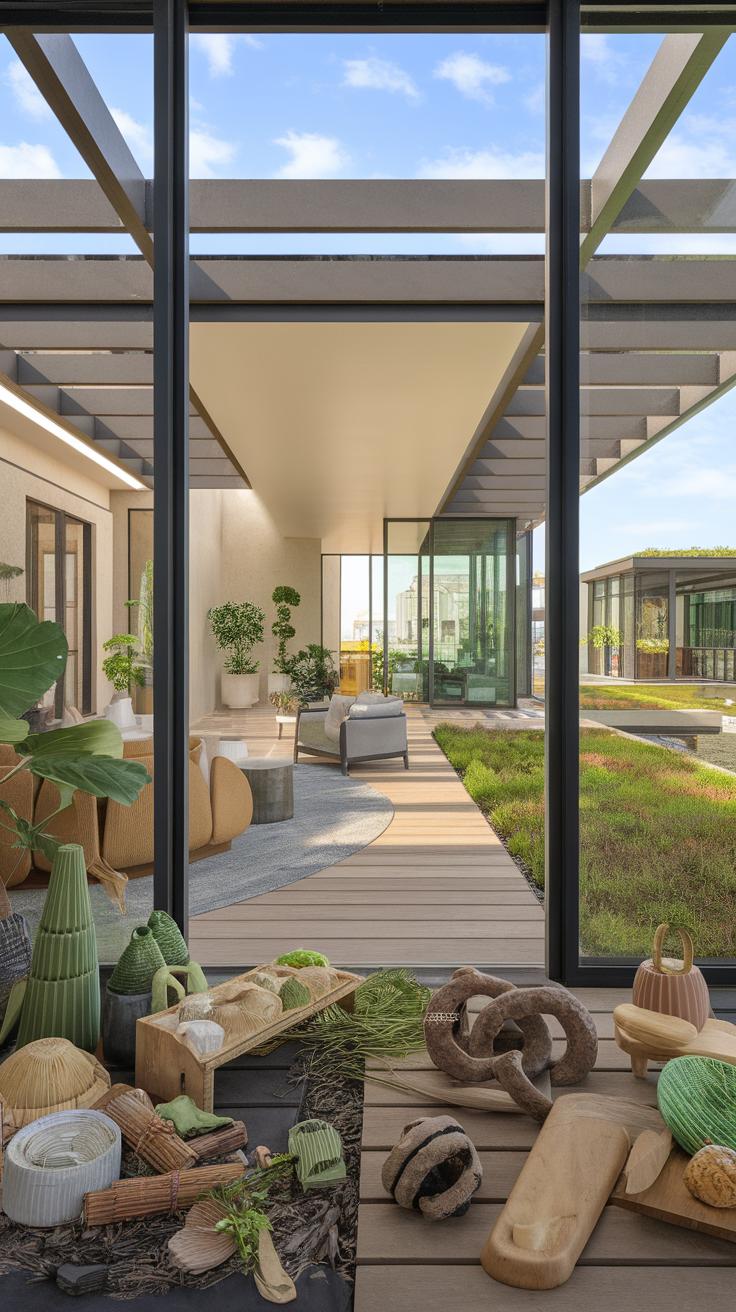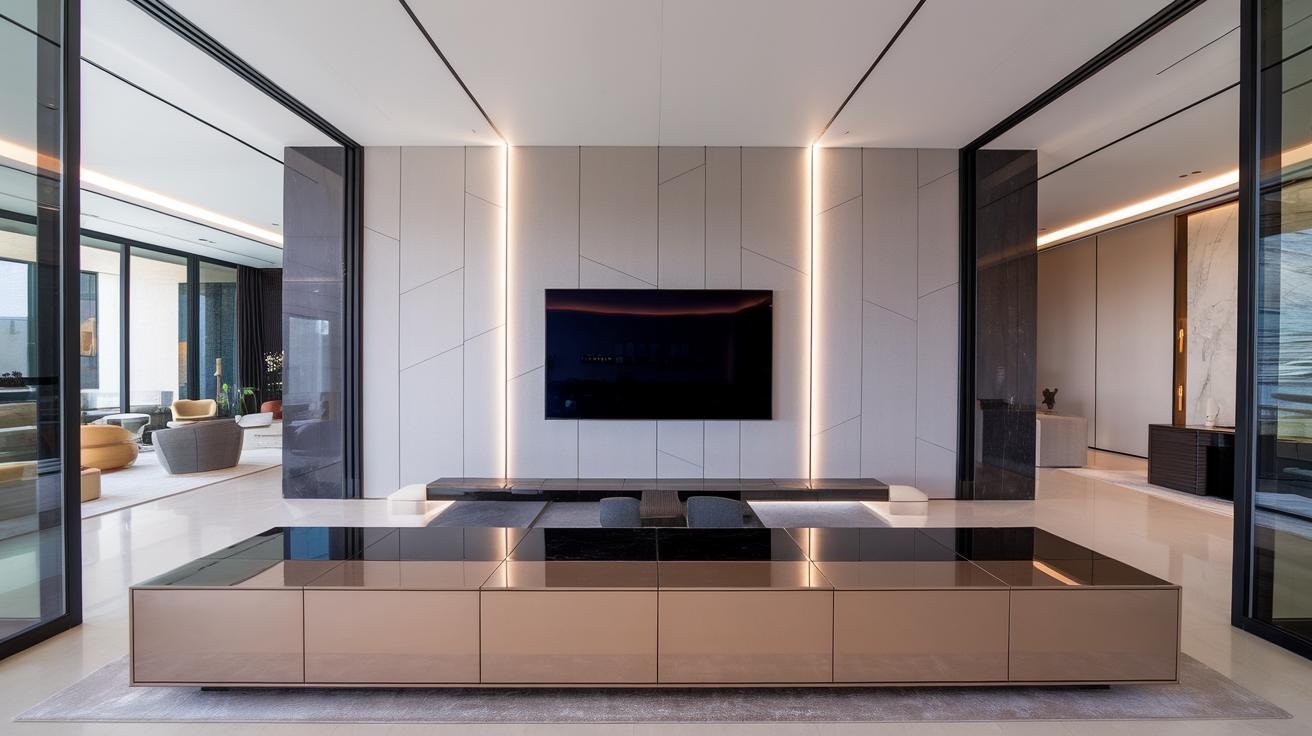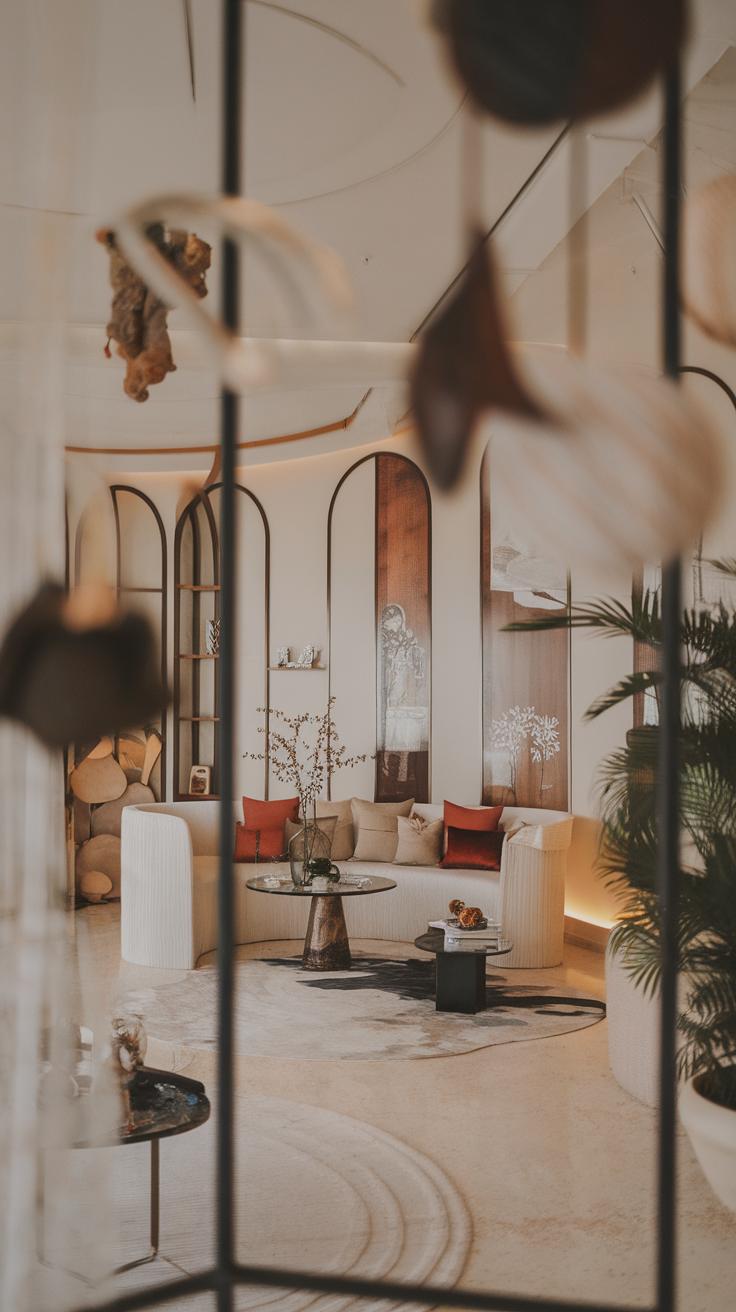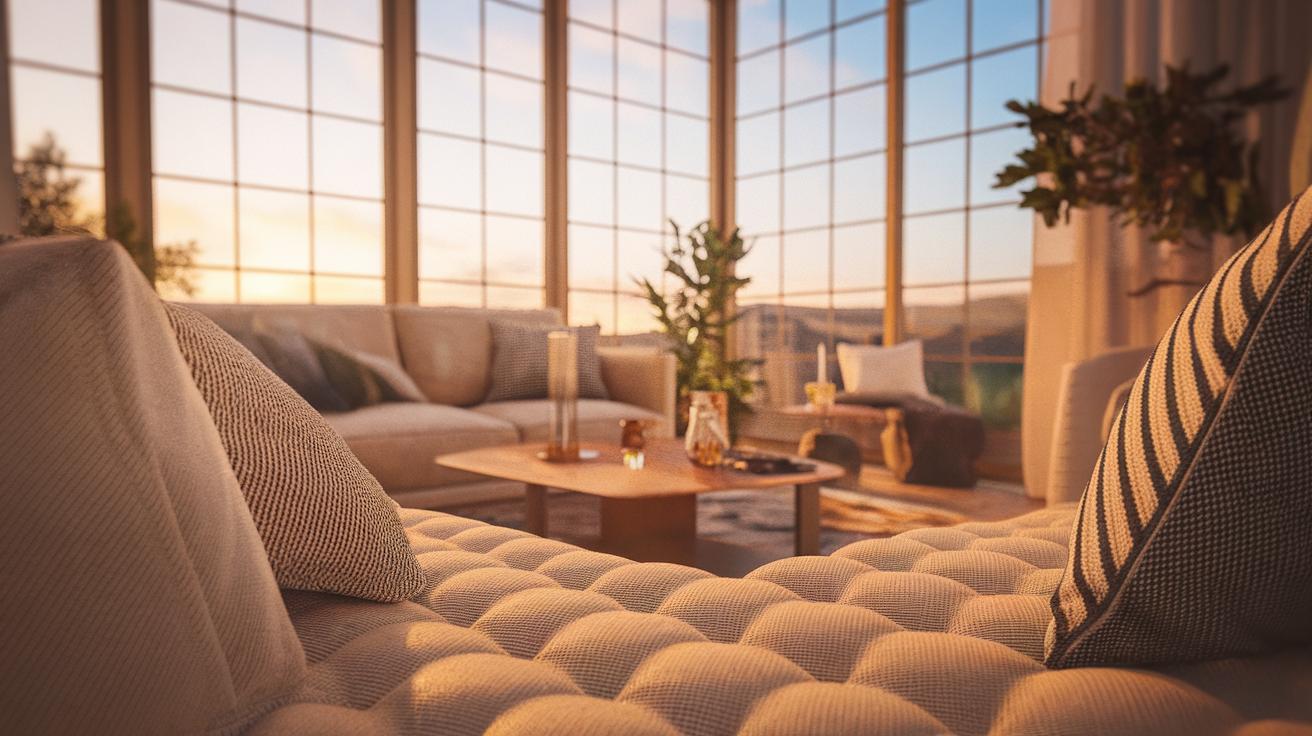Introduction
Modern home interior design combines art and science to create spaces that not only look stunning but also improve the quality of life for residents. With the increasing complexity of architecture and interior aesthetics, the way we approach home design has evolved significantly. A modern interior designer enhances the functionality, leads the design process, and guarantees that each element works harmoniously. Whether through clever space planning or color coordination, every detail plays a crucial role in creating a welcoming atmosphere in any home.
This article explores various modern interior design ideas that elevate your living space. From minimalist approaches that embrace simplicity to vibrant styles filled with rich colors and textures, readers will discover practical suggestions. The key is to blend personal style with functionality, focusing on how to make the most out of every inch within the home. Let’s dive into the transformative world of modern home interior design.
Understanding Modern Interior Design
Modern interior design focuses on creating spaces that reflect simplicity and functionality. This style emerged in the early 20th century as artists and architects sought to break from traditional design norms. Influenced by movements like Bauhaus and Mid-Century Modern, modern design values clean lines, open spaces, and minimal clutter. Homeowners increasingly favor this style in contemporary homes because it promotes a sense of calm and order.
The significance of modern design lies in its ability to adapt to varying lifestyles. It encourages the use of innovative materials and technology to enhance living spaces. People appreciate modern interior design for its practicality and aesthetic appeal. As lifestyles continue to evolve, modern design remains relevant by integrating sustainability and smart technology into homes, making it a popular choice for those who want to create functional and stylish environments.
Key Elements of Modern Design Components That Define Modern Interior Design
Core Features of Modern Interior Design
Modern interior design relies on specific features that set it apart. Minimalism plays a significant role, focusing on simplicity and reducing clutter. Every piece of furniture and decoration serves a purpose, creating a calm environment. Functionality is another vital aspect. Designers choose items that not only look good but also work well in a home. For example, multi-purpose furniture helps maximize space. Open spaces are crucial too; they allow natural light to fill a room, making it feel larger and more inviting. Large windows and open floor plans define this style, creating a seamless flow between areas. These elements combine to form a coherent design that looks fresh and feels practical.
Creating Balance and Harmony
Balance in modern design often comes from symmetry and proportionality. Designers place furniture and decor thoughtfully to avoid overcrowding and ensure fluidity. Harmony arises from a cohesive mix of shapes, sizes, and colors, allowing each element to connect with one another. Straight lines dominate both structure and furnishings, lending a sense of order.
The absence of excessive decor supports the clean look that modern design embraces. This balance and harmony create spaces where functionality meets style, inviting residents to enjoy their surroundings truly. By focusing on these key elements, homeowners can transform their living spaces into modern sanctuaries.
Color Schemes and Textures Enhance Your Space with Modern Design
Understanding Modern Color Palettes
Modern interior design thrives on unique color schemes that create a fresh atmosphere. Soft neutrals, such as whites, beiges, and grays, serve as a calming backdrop while allowing for bold accents. Popular colors like deep blue, rich green, or vibrant mustard can add personality without overwhelming the space. By combining these shades thoughtfully, homeowners can foster harmony in each room. A well-chosen palette can evoke feelings of comfort and relaxation, making every space inviting.
The Role of Textures in Modern Design
Textures play a vital role in modern interiors, adding depth and character. Mixing various materials like smooth glass, rough wood, and soft textiles creates visual interest. For instance, pairing a sleek leather sofa with a cozy knit throw introduces contrast. This blend enhances not only the aesthetic but also the tactile experience of a room. By carefully selecting textures, homeowners can transform a simple living area into an engaging environment that feels both stylish and functional.
Furniture Selection and Arrangement Key Elements of Modern Interior Design
Choosing the Right Furniture
Select furniture that defines modern interior design. Choose pieces with clean lines and functional forms. Materials like metal, glass, and wood serve well in creating a sleek look. Aim for simplicity; avoid overly ornate designs. A few statement pieces add character without overwhelming the space. Keep in mind that furniture should serve a purpose while enhancing the overall aesthetic.
Arranging for Functionality and Flow
Arrange furniture to create an open and inviting atmosphere. Avoid blocking pathways to allow easy movement. Group seating to encourage conversation and connection. Use area rugs to define spaces, especially in open floor plans. Ensure that each piece complements the layout, enhancing both style and function. A well-thought-out arrangement makes the space feel cohesive and comfortable, allowing the beauty of your modern design to shine.
Lighting in Modern Design Investigate the Role of Lighting in Modern Interior Design
How Lighting Affects Feel and Functionality
Lighting plays a vital role in modern interior design. It not only brightens spaces but also sets the mood and enhances the overall look of a room. Different types of lighting—ambient, task, and accent—serve unique purposes. Ambient lighting provides general illumination, creating a welcoming atmosphere. Task lighting focuses on specific areas, like reading lamps, making it easier to complete activities. Accent lighting highlights artwork or architectural features, adding depth and intrigue.
A clever use of natural light can transform any space. Large windows and open layouts invite sunlight, boosting both energy and creativity. Choosing modern light fixtures, such as sleek pendant lamps or minimalist sconces, adds style while fulfilling functional needs. These elements together elevate your space, making every room feel both chic and purposeful.
Integrating Technology Modern Interior Design in the Digital Age
Enhancing Functionality and Aesthetics
Modern home interior design thrives on the effective use of technology. Smart home devices have become essential, improving both style and practicality. For example, smart thermostats adjust temperatures based on your habits, saving energy and enhancing comfort. Integrated sound systems fill rooms with music and allow easy control from your smartphone.
Lighting controls also play a significant role. Programmable systems let you set the mood for any occasion, ensuring bright light for work or soft ambiance for relaxation. Home automation improves convenience, allowing you to manage your environment with simple commands. This seamless integration of technology not only updates your space but also sparks creativity in design.
Benefits of a Tech-Savvy Home
Incorporating technology streamlines daily tasks while boosting your home’s appeal. Enhanced security systems provide peace of mind with smart locks and cameras, while energy-efficient appliances promote sustainability. The combination of form and function elevates your living experience. Modern interior design embraces these advancements, making your home stylish and enjoyable.
Sustainable Design Practices Explore Sustainable Practices in Modern Interior Design
The Growing Importance of Sustainability
Sustainable design practices in modern interior design focus on using eco-friendly materials and energy-efficient solutions. Homeowners seek to minimize their environmental impact while creating beautiful spaces. Designers choose materials like bamboo, recycled wood, and low-VOC paints. These options not only promote sustainability but also enhance indoor air quality. Many clients express a strong desire to reduce waste and energy consumption, driving the demand for these methods.
Choosing Eco-Friendly Materials
Today, more people appreciate the benefits of incorporating sustainable materials into their homes. When selecting furniture and decor, consider pieces made from reclaimed wood or organic fabrics. These choices reduce the need for new resources and lower your carbon footprint. Designers often emphasize durability, helping homeowners select items that last longer and require fewer replacements. This mindful approach fosters a harmonious balance between aesthetics and environmental responsibility.
Personalizing Your Space Reflect Your Style in Modern Interior Designs
Bringing your unique personality into your home doesn’t have to clash with modern aesthetics. Start by choosing a color palette that resonates with you. Warm tones can create a cozy atmosphere, while cool colors promote tranquility. Select furniture that represents your taste; pieces with clean lines often embody a modern style, but you can opt for vintage items to add character.
Incorporate personal artwork or photographs. Displaying these items on your walls will make the space feel special and inviting. Mix textures and materials, such as pairing wood with metal or fabric, to create depth. Use decorative accessories like throw pillows or rugs that feature patterns reflecting your interests. These elements will accentuate your space while ensuring cohesiveness in design.
Conclusion and Future of Interior Design Reflecting on Modern Ideas
The future of modern home interior design holds endless possibilities. People increasingly seek spaces that offer both style and functionality, prioritizing comfort and sustainability. Designers focus on eco-friendly materials and smart technology, allowing homeowners to create efficient living areas that reflect their lifestyles. Open floor plans, clean lines, and minimalism will continue to dominate trends, yet personal expression remains vital.
Readers should embrace their creativity by experimenting with bold colors, unique textures, and innovative layouts. Choosing pieces that resonate personally can transform any space into a reflection of individual taste and personality. By merging aesthetics with functionality, anyone can create an inviting environment. Each small change holds the potential to elevate a space, making it a true home that tells its owner’s story.
Conclusions
Modern home interior design emphasizes creating spaces that reflect personal taste while serving practical purposes. It requires a balance between aesthetics and functionality, ensuring that your home remains a true sanctuary. Utilizing various design principles can lead to spaces that not only inspire but also promote well-being.
As you consider the suggestions presented in this article, remember that your home should echo your personality and lifestyle. By implementing the right design elements, you can achieve a harmonious and visually appealing space. Start with small changes and gradually explore larger concepts that will ultimately create a modern masterpiece in your home.





